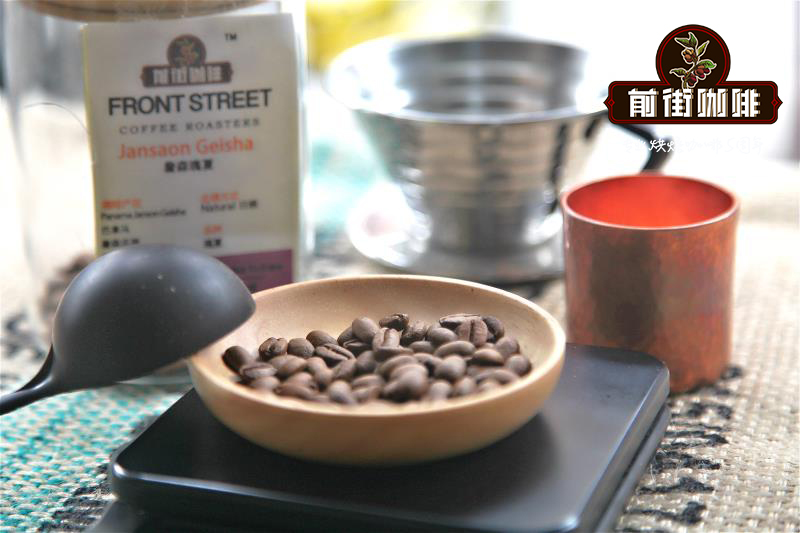What happens during coffee roasting? coffee bean roasting temperature and time coffee roasting taste

Professional coffee knowledge exchange more coffee bean information please follow the coffee workshop (Wechat official account cafe_style)
Roasted coffee transforms the chemical and physical properties of raw coffee beans into roasted coffee products. The roasting process causes raw beans to expand and change their color, taste, smell and density, resulting in the special flavor of coffee. Unroasted coffee beans and roasted coffee beans contain similar acidity, protein and caffeine, but lack their good taste. The process needs to be hot enough to accelerate Maillard's reaction with other chemical reactions that add flavor.
As raw coffee beans are much more stable than roasted coffee beans, the roasting process tends to take place near the consumer market. This reduces the delivery time of roasted coffee beans and maximizes the shelf life of coffee beans. The vast majority of coffee beans are roasted commercially on a large scale, but some coffee drinkers bake their own beans in order to accurately control their freshness and taste.
Different roasting methods will affect the flavor, aroma and taste of the final coffee, because chemical changes will occur at different time points during roasting.
But regardless of the baking method, baking is mainly divided into three stages: dehydration, Maynard (caramelization) reaction, and flavor development. These terms actually describe the different stages of chemical and physical changes.
1. dehydration
The dehydration process occurs at the temperature recovery point, which is when you put the raw beans in the baking machine, the heat inside the machine will drop before rising again, and the point at which the temperature begins to rise is called the temperature recovery point. During the dehydration stage, the water in the raw beans will begin to evaporate and the pressure will begin to form inside the beans.
two。 Maynard reaction
When the coffee beans begin to turn brown, the Maynard reaction begins, which happens when heated to about 150 °C. This process produces a lot of gases, including carbon dioxide, water vapor, volatile gases and so on. When the internal pressure is large enough to break through the cell wall, it expands, which is called the first explosion.
Flavor development will also occur at the same time in Maynard reaction, in addition to beans color change, but also affect the final coffee flavor.
3. Flavor development period
When baked to an explosion, baking changes from an endothermic reaction (absorbing heat from the drum) to an exothermic reaction (beans release heat). At this stage, the physical changes will continue, the pores on the bean surface will continue to increase, the oil will continue to move from the core to the surface, and the color will continue to darken. Many chemical reactions also take place at this stage.
Important Notice :
前街咖啡 FrontStreet Coffee has moved to new addredd:
FrontStreet Coffee Address: 315,Donghua East Road,GuangZhou
Tel:020 38364473
- Prev

Coffee roasting physical changes of coffee roasting temperature and time during coffee roasting
For more information on coffee beans, please follow the coffee workshop (official Wechat account cafe_style). Roasting converts coffee beans from raw beans to ripe beans with rich aroma and flavor, but do you know what happened during the roasting process? When we bake beans, they are mainly divided into physical and chemical changes, volume and pores, and the cell wall strength of coffee beans ranks at the top of the plant kingdom.
- Next

Changes in coffee roasting: what are the chemical changes in the roasting process of coffee beans
Professional coffee knowledge exchange more coffee bean information please follow the coffee workshop (Wechat official account cafe_style) do you know what happens when roasting coffee beans? What are the chemical changes that transform raw coffee beans into coffee ripe beans with charming flavor and rich aroma? The main chemical reaction heating coffee beans will trigger hundreds of different chemical reactions, and roasting will drop.
Related
- Beginners will see the "Coffee pull flower" guide!
- What is the difference between ice blog purified milk and ordinary milk coffee?
- Why is the Philippines the largest producer of crops in Liberia?
- For coffee extraction, should the fine powder be retained?
- How does extracted espresso fill pressed powder? How much strength does it take to press the powder?
- How to make jasmine cold extract coffee? Is the jasmine + latte good?
- Will this little toy really make the coffee taste better? How does Lily Drip affect coffee extraction?
- Will the action of slapping the filter cup also affect coffee extraction?
- What's the difference between powder-to-water ratio and powder-to-liquid ratio?
- What is the Ethiopian local species? What does it have to do with Heirloom native species?

